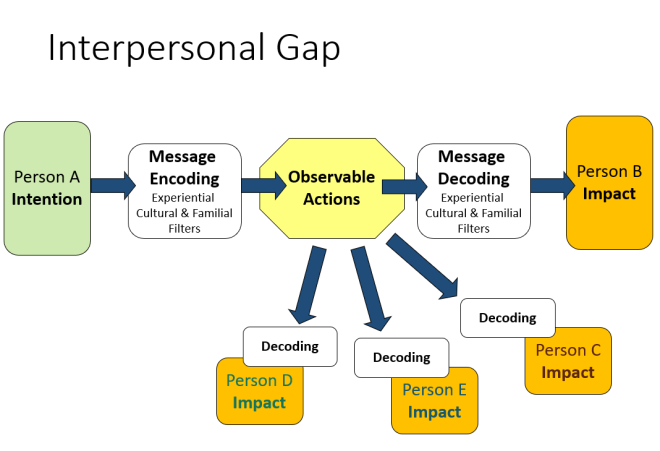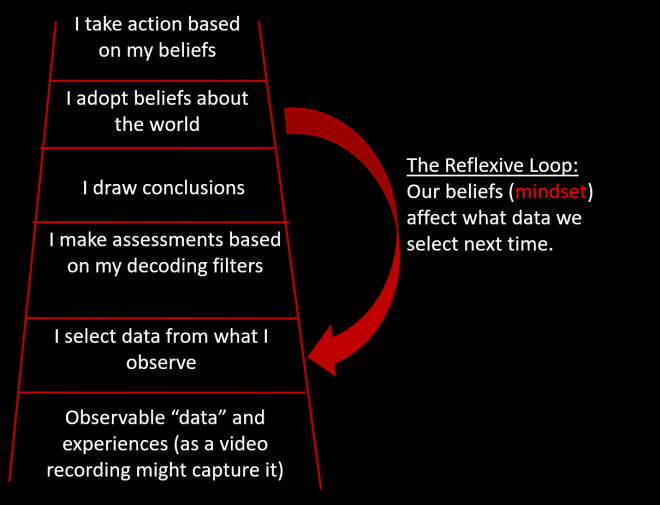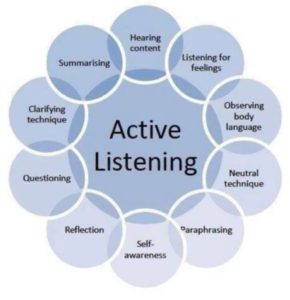Active Listening and the Interpersonal Gap
Leadership
Listening is the cornerstone skill of an influential leader. We are rarely explicitly taught HOW to listen. We may be lucky and learn effective methods from our family system, or by emulating a skilled mentor. But often, we are left to figure out how to effectively listen through trial and error. Some people learn it and others don’t. Our language and practice of listening is not common or dependable. This erodes trust.
To build strong and resilient cultures, we must explicitly teach and practice how to listen.
Leadership is a process of social influence where one person enlists the aid and support of others in the accomplishment of a common task. This definition comes from Martin Chemers’ book An Integrative Theory of Leadership. In this definition, there is no mention of position or rank. Anyone can be a leader in any organization, family system, or group.
When we hear the word leader, our thoughts have been shaped to envision someone in charge of others or people making decisions in the spotlight.
The leader in our definition is a person who shares their opinion, perspective, and insights to help move a task along. This means that when you share your opinion at a meeting, you are being a leader. There is nothing more to it. Yet, there are ways to do it effectively. Active listening is an essential part of the foundational skillset for influential leaders who want weave strong cultures.
Listening – Actively
Our ears are always hearing. Hearing is the act of receiving and perceiving sound waves or vibrations. Listening is the act of hearing and consciously applying attention and effort to interpret what you are hearing.
Most of us listen to respond, not to understand. We do this because this is what we have been unconsciously trained to practice. Responding gets rewarded in our culture.
To respond appropriately, considerately, and collaboratively, we need to listen actively. It is the intention, effort, and attention that creates the active part of active listening.
Filters – The Way we see the World
When we are in conversation with another person we bring different backgrounds and viewpoints to a common issue. These viewpoints make up the filters through which we see the world. We cannot see the world without our filters. And we cannot see another person’s filters unless we become curious about that person.
No one is objective. Everyone’s filters are different. They are not right or wrong, they simply are.
For example, Jesse has a method of organizing where all tasks are written down and crossed of the list as completed. She is often seen working at her desk. Her conversations with others are short, direct, and task-focused. This helps her manage time and accomplish her tasks.
Penelope has a list as well. During her day, she prefers open-ended conversations with other people. She learns about them and how they work. Her conversations are inquisitive and can be lengthy. People feel they can open-up around her. Her tasks for the day regularly get reworked and reorganized depending on what she discovers while talking with others.
After reading these, I imagine you had an opinion about which person’s method is more effective than the other. This is a direct result of your filters.
Filters are created throughout our life. We push our intention and absorb impact through these filters. These filters make up our belief systems and mental models. They are shaped by the systems we live within.
Our initial shaping happens in our family system – the group of people that make up our primary caregivers and those that support them. They have in turn been shaped by their early family system and their experiences with the larger world – where they work, where they learn, what historical events were taking place in their life, where they grew up, and the implicit and explicit expectations of the communities they belong to.
This shaping forms the lens through which we interpret the world. These initial experiences define what we think possible, what action we can take, and how we take it. Because of our filters, we all have our particular ways of being in the world.
Interpersonal Gap
Throughout much of our day, our filters are bumping up against the filters of others. This can lead to snap judgments and misconceptions about a person’s intentions. This is called the interpersonal gap.

The interpersonal gap is always at play in every relationship. It happens when one person’s intention does not match the impact he or she is trying/hoping to have on another. If there are many people in the room, the interpersonal gap is happening with all of them.
When the impact does not match the intention, rifts occur that impede us from socially influencing others, accomplishing tasks, and creating a trusting culture. To become an influential leader – a culture shaper, we must believe that the interpersonal gap is happening far more than we know or desire to acknowledge.
Jesse wants people to complete tasks in a timely manner. She feels this will solve 99% of the organizations and even the world’s problems.
Penelope values people being heard and included. She feels this will solve 99% of the organizations and even the world’s problems.
When Jesse and Penelope get together to discuss a task, the interpersonal gap is at play.
The First Step
We are meaning making machines. Chris Argyris created a model called the Ladder of Inference. A common, automatic practice people reflexively use when trying to make sense of something.
A person makes a statement or observation. We select the part of what they say that triggers or has meaning to us. We then interpret what we think they were driving at with the part we selected. We make meaning of what they said through our filters. Then, draw conclusions, create beliefs, and take action. This happens in a fraction of a second. It is hard wired into our system.

To interrupt this reflexive loop is uncomfortable. It means that we may not know as much as we suspected. We may have to admit there are other ways of getting things done. Or alternate systems of belief that have value. We may even feel physically unsafe or uncomfortable.
Knowing the loop is present, knowing we have filters that are different than others, and opening our listening is not easy, but if we take the following steps, it become more attainable.
The Way Forward
- First, listen without reacting. Not reacting may take time. I suggest meditation as a tool to interrupt your automatic responses. See this post to learn how.
- The second step is to slow down the conversation. This helps you understand what is important.
- To do this you paraphrase. “What I heard you say was… to slow down I repeat back to you what you said to make sure I understood. Did I get that?”
- You can also paraphrase when you start to lose track of where they began or what they are saying.
- You interrupt them, “Hold on, can I make sure I understand what you are saying? This is a lot and I want to be sure I get it.”
- The third step is to listen. Then repeat steps one and two.
- Lastly, you can respond once the person replies, “Yes, that is what I mean.” Then respond slowly.
A few other tools are sharing your perception and parroting. Parroting is often used to repeat instructions that are vital to know verbatim or with small children. “You said, respond slowly.” Or “Yes, I see the train too.”
To check someone’s perception you share what you think their intention is. “I think you are trying to help me understand how to listen so I can be a more effective leader. Did I get that?”
You can also ask to be actively listened to. This is practicing curiosity and is an advanced step toward becoming an influential leader and culture shaper. “Can you play back what you thought I said? I want to make sure I am clear.” What you hear will help you understand the other person’s filters as you learn what data points they took away.
As influence is not a single act or event, but a web of connection, if we are not aware that what we are seeing or building is not the full story, our leadership may be ineffective and misplaced. Leading to the erosion of trust which undermines the strong and resilient culture we are trying to build. We want you to be able to take effective action and build strong cultures. Start by actively listening.


